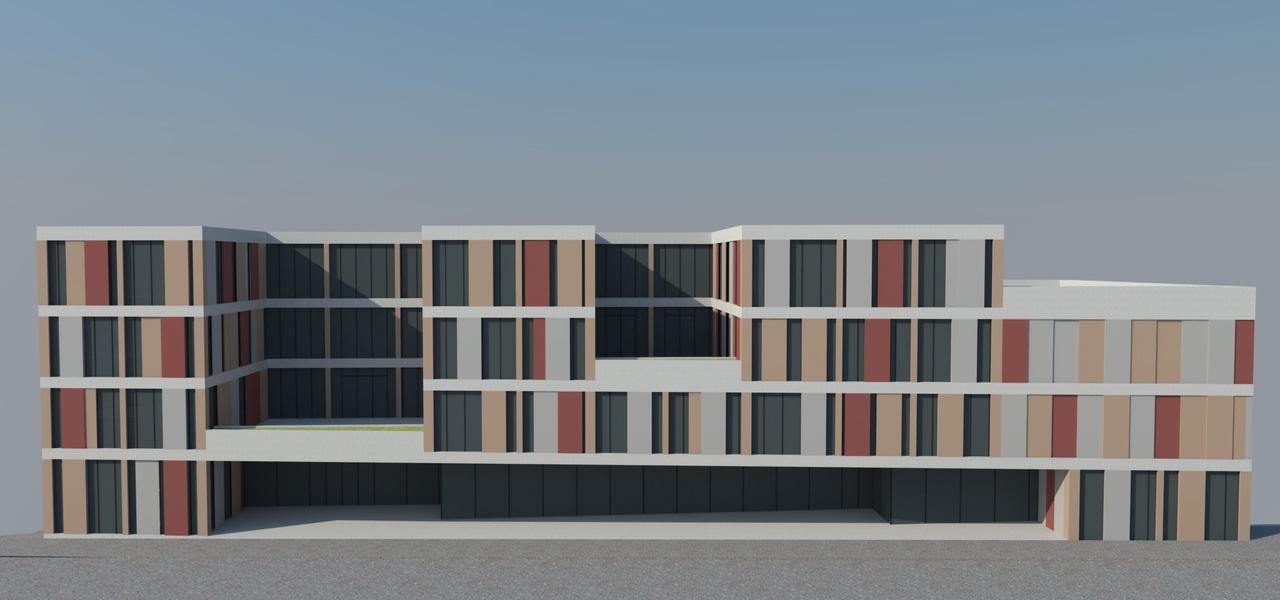
Maritime Faculty in Rijeka
Status:
Project not implemented
Year of designing:
2013.
Program:
Public, Education, Urbanism
Location:
Student street 2, Rijeka,
show location on map
Spatial scope
interior 14,500.00 m2, exterior 2,000.00 m2
Value of investment:
9,000,000.00 €
Investor:
Author:
Arhitektonsko-građevinski atelje d.o.o.
Project team:
Arsen Čupev, Borko Zugan, Kristina Žuvela, Vladi Bralić
Associates:
, ,, (građevne instalacije)
The oldest part of the Maritime faculty was built in 1900. by a Hungarian program of schooling development in Rijeka and the project of Hungarian architect Alpar Ignaz for the needs of the former Trading academy. The building was built in the style of historicism (high renaissance eclecticism) on an irregular site and gives an impression of three buildings connected in one block, having two facades facing Fiorella la Guardia street, and one towards Student street. It was a contemporary equipped school building for its time, with lecture halls, cabinets and administrative spaces. Afterwards, an annex was added to the existing building from 1900. directed to the access path and the nearby park. The new building accommodated Viša pomorska škola (later turned into a faculty) with educational spaces and a sports hall. Today the specified buildings make an integrated complex of the Maritime faculty and form part of a city block with an inner courtyard sited in two levels. The south (lower) part of the courtyard is used for parking, and the north (upper) part as an outdoor space for students and access to the recent faculty sports hall.
Reconstruction and expansion is planned for the existing faculty building, so that long term needs of the faculty could be fulfilled.
The basic design concept is based on the urban idea of finishing the urban complex of the city block from the XIX. century. The only vacant lot is owned by the city and stretches on the northeast side towards the street Slaviša Vajner Čiča. The architectural interpolation of the contemporary faculty building is conceived on that surface and needs to be adjusted to certain limitations coming from the existing urban context.
The City representatives concur with the expansion of the faculty to the vacant lot, but in doing so it’s necessary to keep the sports-recreation purpose of the covered playing field that exists today. Therefore, the idea is to build an alternative sports hall in place of the playing field, utilized not only by the faculty, but also for the needs of the city and its residents. Of course, the rest of the upgrade would benefit exclusively for the expansion of faculty content (auditory, library, lecture halls, halls for navigation simulation…).
The architectural solution follows one of the most fundamental theoretical postulates of contemporary architecture representing the view that it is possible to design and build inside of a historic city core in a way consistent with the present time, taking into consideration that the interpolated building shouldn’t be too large, too stripped down or stereo-geometrically primitive.
Therefore, the building is designed with grading volumes so that the interpolated corpus could approach the existing spatial relations of the city block and the wider area. The facades are covered in glass and sliding panels used for sun protection. The line of the building towards the streets follows the default route, and towards the faculty courtyard stands in determined rhythmic shifts representing a 3-dimensional structure. Parts of the facade that are not covered in glass are coated with full panels following the grid of the glass. The ground floor towards the street Slaviše Vajnera Čiče is indented to make a widening in front of the covered building entrance. The east facade contains an element of a passage so that the public space can expand inside the city block towards the faculty courtyard. Roof terraces are a significant element of the building design providing the students and employees of the faculty quick access to outdoor space.
Other projects from the category Education:
- National Reading Room
- Astronomy Centre
- Zrinski Castle - an Exhibition
- Julije Klović Croata - a Memorial Collection












